C
Showing 37–47 of 47 results
-


long (Organic) – लौंग – Clove – Syzygium aromaticum
₹280.00 – ₹2,300.00Quick ViewAyurvedic classification of clove :
Ayurvedic Property Ayurvedic Use Rasa (Taste) Katu (Pungent), Tikta (Bitter), Madhura (Sweet) Guna (Quality) Laghu (Light), Teekshna (Sharp), Sara (Unctuous), Ruksha (Dry) Virya (Potency) Ushna (Hot) Vipaka (Post-Digestive Taste) Katu (Pungent) Dosha (Effect on Humors) Balances Kapha and Vata Doshas, may aggravate Pitta Dosha in excess Dhatu (Tissue) Plasma, Blood, Muscle, Fat Srotas (Channel) Digestive, Respiratory, Circulatory Action Analgesic, Anti-inflammatory, Antioxidant, Anti-microbial, Carminative, Expectorant, Immune-stimulant, Warming Active Compound Description Health Benefits Eugenol A phenolic compound with a strong aroma and flavor. Antioxidant, anti-inflammatory, analgesic, and anti-microbial properties. May help improve dental health, reduce inflammation and pain, and support overall immune function. Flavonoids A group of plant pigments with antioxidant and anti-inflammatory properties. May help reduce the risk of chronic diseases such as heart disease and cancer, and support overall immune function. Tannins A type of polyphenol with astringent properties. May help reduce inflammation and pain, and support healthy digestion. Sesquiterpenes A group of aromatic compounds with anti-inflammatory and anti-microbial properties. May help reduce inflammation, support healthy immune function, and protect against infections. -
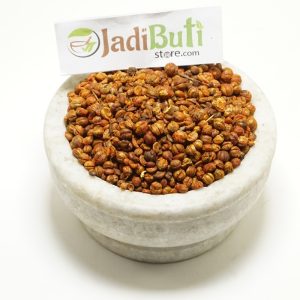
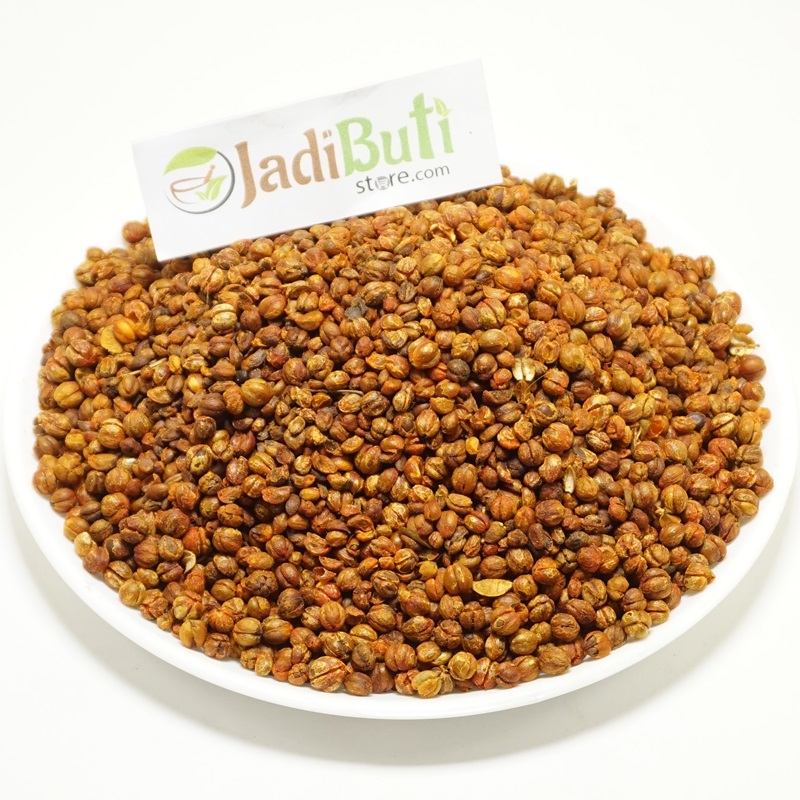
Malkangni – मालकांगनी – Black oil Tree – Celastrus paniculatus
₹760.00 – ₹6,290.00Quick ViewMalkangni seeds, Intellect Tree seeds
Scientific name: Celastrus paniculatus | Plant family: Celastraceae
Ayurvedic classification: | Parts used: Seeds
****** ***** Rasa (Taste) Tikta (Bitter), Katu (Pungent) Guna (Quality) Laghu (Light), Tikshna (Sharp) Virya (Potency) Ushna (Hot) Vipaka (Post-digestive effect) Katu (Pungent) Dosha Effect Balances Vata and Kapha doshas, increases Pitta dosha Action (Karma) Medhya (Nervine tonic), Vrushya (Aphrodisiac), Balya (Increases strength), Deepana (Digestive stimulant), Pachana (Digestive), Shothahara (Anti-inflammatory), Sangrahi (Astringent), Hridya (Heart tonic) -
Sale!

 25%
25% Musli (Safed Musli) – सफ़ेद मूसली – White Musale – Chlorophytum Borivilianum
₹340.00 – ₹3,020.00Quick ViewSafed Musli | Musli White
Chlorophytum borivilianum | Product : Dried Musli Organic
Ayurvedic Classification Description Rasa (taste) Sweet, bitter, and pungent Guna (qualities) Guru (heavy), snigdha (unctuous), and vishada (non-slimy) Virya (potency) Cooling Vipaka (post-digestive effect) Sweet Dosha effect Pacifies Pitta and Vata doshas Karma (actions) Adaptogenic, aphrodisiac, immunomodulatory, galactagogue, and antioxidant Dhatu (tissue) affinity Works primarily on the reproductive and nervous tissues Srotas (channel) affinity Works primarily on the reproductive and nervous channels Prabhava (special effect) Increases desire and performance Active compounds & benefits found in safed musli (Chlorophytum borivilianum):
Active Compound Benefits Saponins Aphrodisiac, adaptogenic, and immune-boosting properties Polysaccharides Immunomodulatory and anti-inflammatory properties Alkaloids Antioxidant and anti-inflammatory properties Flavonoids Antioxidant and anti-inflammatory properties Phenolics Antioxidant and anti-inflammatory properties Proteins and amino acids Essential for growth and repair of body tissues Vitamins and minerals Essential for overall health and well-being -
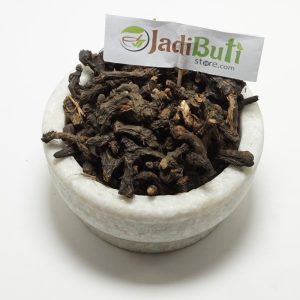
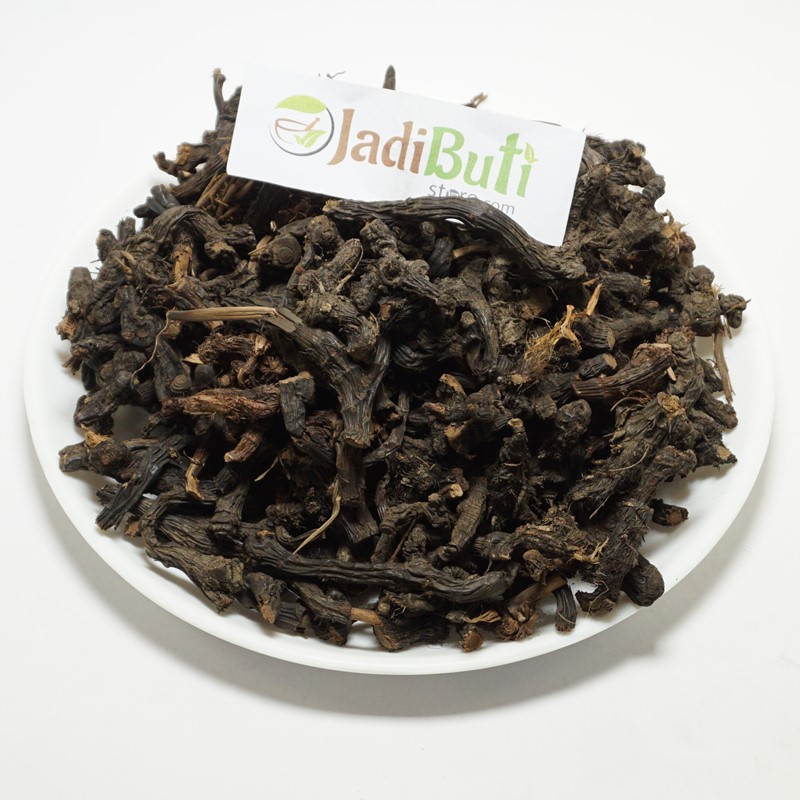
Nagarmotha – नागरमोथा – Sedge Root – Cyperus rotundus
₹90.00 – ₹730.00Quick ViewNagarmotha (Cyperus rotundus) is a perennial herbaceous plant that is widely used in Ayurvedic medicine for its various health benefits. It is native to India and is also known by the common names of Nutgrass, Coco grass, and Mustaka.
Here are some key features and uses of Nagarmotha in Ayurveda:
Key Features:
- Digestive aid
- Anti-inflammatory
- Diuretic
- Antimicrobial
- Anti-diabetic
- Anti-cancer
Uses:
- Improving digestion and treating digestive disorders such as indigestion, diarrhea, and dysentery.
- Alleviating pain and inflammation associated with various health conditions such as arthritis and menstrual cramps.
- Promoting urination and treating urinary tract infections and kidney problems.
- Fighting against microbial infections such as bacterial and fungal infections.
- Regulating blood sugar levels and treating diabetes.
- Fighting against cancer cells and preventing the formation of tumors.
-

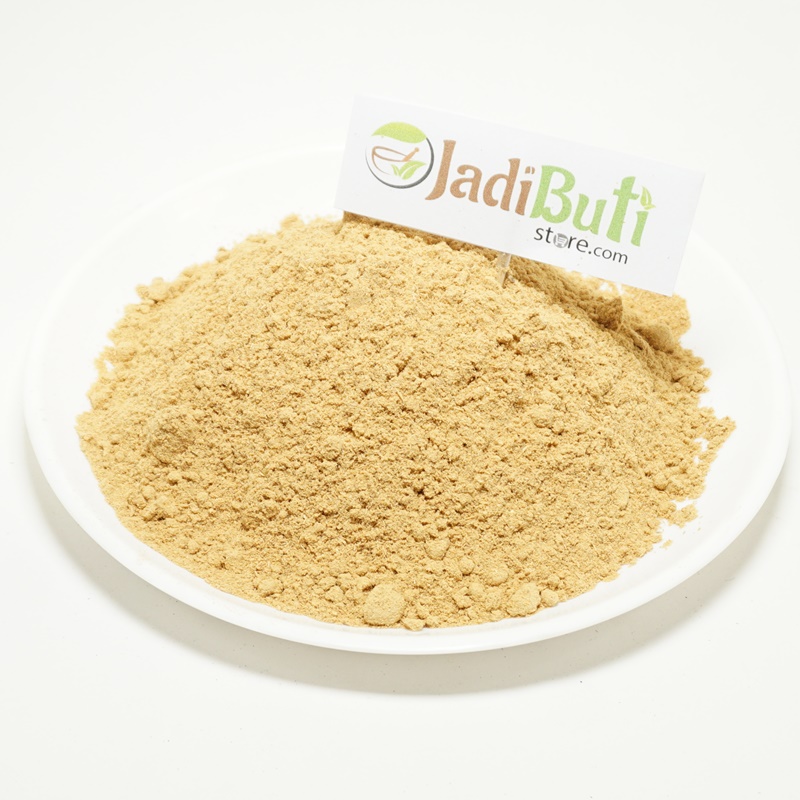
Safed Chandan powder – सफ़ेद चंदन – White Sandalwood powder – Pterocarpus santalinus
₹280.00 – ₹3,565.00Quick ViewWhite sandalwood powder is a fine powder made from the heartwood of the Santalum album tree, which is native to India and other parts of Asia. It has been used for centuries in Ayurveda, the traditional Indian system of medicine, as a natural remedy for various health and beauty conditions. White sandalwood powder is rich in antioxidants and has anti-inflammatory, antiseptic, and astringent properties. It is a popular ingredient in skincare, hair care, and medicinal products. It can be used to soothe and moisturize the skin, reduce acne and dark spots, promote hair growth, and relieve sunburn and inflammatory conditions. White sandalwood powder is also used in aromatherapy and meditation practices for its calming and grounding effects on the mind.
Ayurvedic Safed Chandan (White Sandalwood):
Ayurvedic Classification Description Rasa (taste) Bitter, astringent, sweet Guna (qualities) Light, dry, cool Virya (potency) Cooling Vipaka (post-digestive effect) Sweet Dosha effect Pacifies Pitta and Vata doshas Karma (actions) Cooling, soothing, anti-inflammatory, anti-bacterial, and anti-viral Dhatu (tissue) affinity Works primarily on the plasma, blood, and reproductive tissues Srotas (channel) affinity Works primarily on the respiratory, digestive, and reproductive channels Prabhava (special effect) Calming and cooling effect on the mind and body -

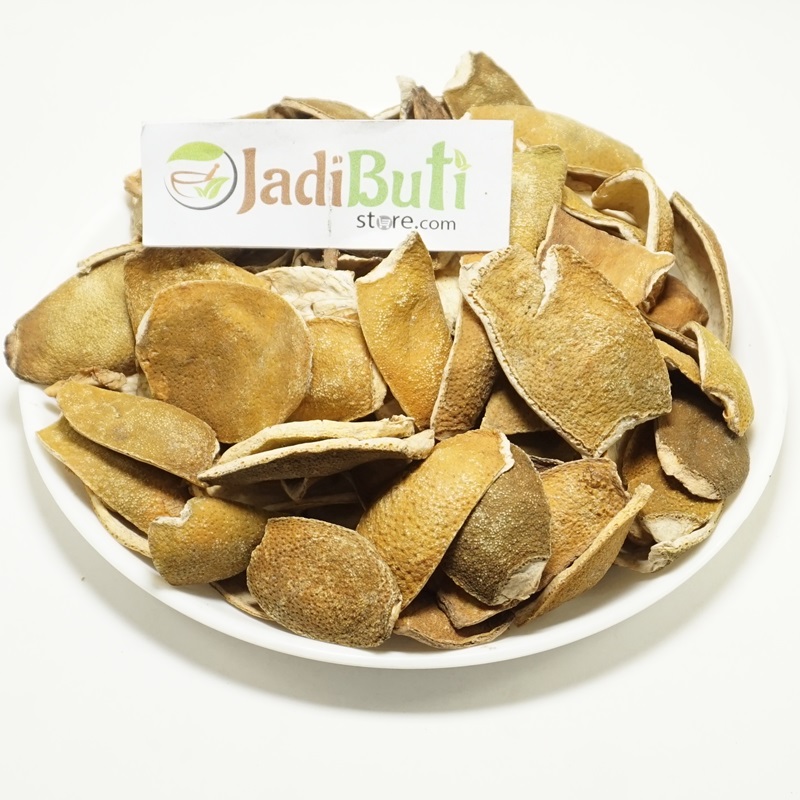
santra chilka – संतरा छिलका – Orange Peel – Citrus aurantium
₹100.00 – ₹800.00Quick ViewOrange peel refers to the outer, colored skin of oranges, which is typically removed and discarded before eating the fruit. However, orange peel has been used for centuries in traditional medicine systems like Ayurveda, as it is rich in beneficial plant compounds.
Here are some Ayurvedic properties and health benefits associated with orange peel:
Ayurvedic Properties:
- Rasa (taste): Bitter (tikta), Astringent (kashaya), Pungent (katu)
- Virya (energy): Cooling (shita)
- Vipaka (post-digestive effect): Pungent (katu)
- Doshas (constitutions): Balances Kapha and Pitta, aggravates Vata in excess.
Health Benefits:
- Digestive health: Orange peel is believed to stimulate digestion, relieve indigestion, and reduce bloating and gas.
- Immune system health: Orange peel is rich in vitamin C, which can help to support the immune system and protect against infections.
- Respiratory health: Orange peel is believed to have expectorant properties, which can help to relieve respiratory congestion and promote the elimination of mucus from the lungs.
- Skin health: Orange peel is often used in Ayurvedic preparations for skin health, as it is believed to have anti-inflammatory and wound-healing properties.
- Anti-inflammatory properties: Orange peel is believed to have anti-inflammatory properties, which can help to reduce inflammation and pain in the body.
- Antioxidant properties: Orange peel contains flavonoids and other antioxidants, which can help to protect the body against damage from free radicals.
It is important to note that more scientific research is needed to validate these benefits and to determine the safety and effectiveness of orange peel for these uses. It is also recommended to use organic oranges when using the peel, to avoid ingesting pesticides or other harmful chemicals.
-


Senna leave – सेन्ना पत्ती – Cassia angustifolia
₹110.00 – ₹875.00Quick ViewSenna leave – सेन्ना पत्ती – Cassia angustifolia
Common Name: Senna Leaves
Scientific Name: Cassia angustifolia
Family: Fabaceae
Native Region and Geographical Distribution: Senna leaves are native to the regions of the Arabian Peninsula, Africa, and India. They are widely cultivated in many parts of the world including India, Pakistan, Egypt, Sudan, Somalia, and Ethiopia.
Active Compounds: The primary active compounds in Senna leaves are anthraquinone glycosides such as sennosides A and B.
Ayurvedic Properties: Senna leaves are known to have a strong laxative effect and are used in Ayurvedic medicine to treat constipation, cleanse the bowel before diagnostic procedures, and to treat conditions such as hemorrhoids and anal fissures.
Other Benefits: Senna leaves may also have potential as an anti-inflammatory and antimicrobial agent. However, further research is needed to explore these properties.
Precautions and Side Effects: Senna leaves should not be used for prolonged periods of time or in excessive amounts, as this may lead to dependency, electrolyte imbalances, and other complications. Long-term use may also lead to a condition known as melanosis coli, which is characterized by the discoloration of the colon. Senna leaves are also not recommended for use during pregnancy or breastfeeding, as they may cause uterine contractions or pass through breast milk.
Disclaimer: This information is not intended to be a substitute for professional medical advice, diagnosis, or treatment. Always seek the advice of your physician or other qualified healthcare provider with any questions you may have regarding a medical condition.
-

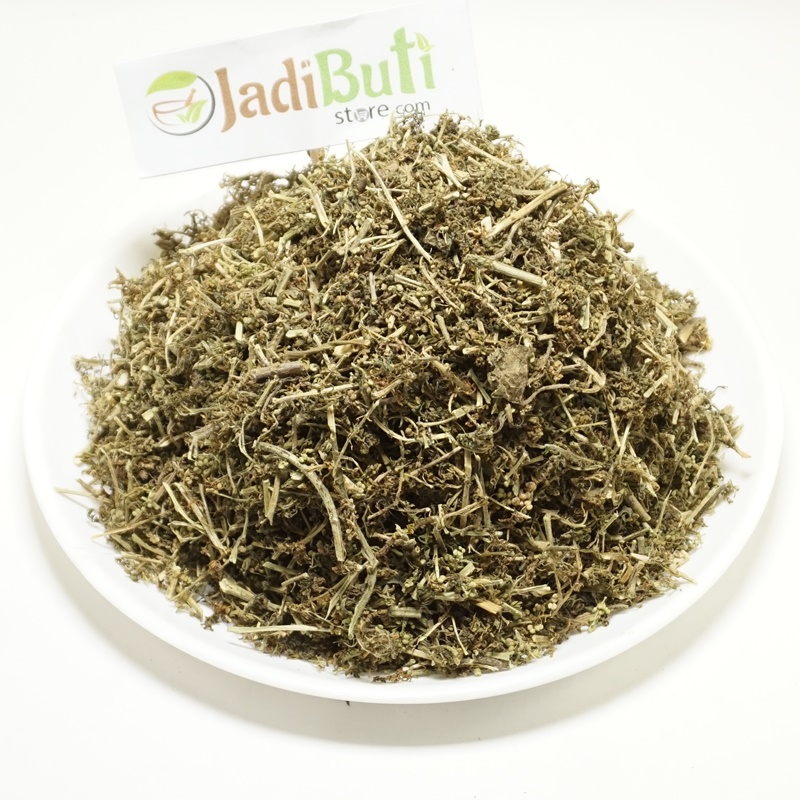
Shahtara – शाहतारा – Common Fumitory – Fumaria officinalis
₹320.00 – ₹2,595.00Quick ViewCommon Fumitory, Shahtra | Botanical Name: Fumaria officinalis
Family: Papaveraceae | Parts Used: Aerial parts
Ayurvedic Properties:
- Rasa (Taste): Bitter, Astringent
- Guna (Quality): Light, Dry
- Virya (Potency): Cooling
- Vipaka (Post-Digestive Effect): Pungent
- Doshas: Pacifies Pitta and Kapha doshas, may increase Vata in excess
Ayurvedic Uses:
- Supports liver health
- Improves skin health
- Improves digestion
- Relieves respiratory issues
- Purifies blood
- Boosts immunity
- Improves eye health
- Supports urinary health
- Relieves joint pain and inflammation
- Calms the mind
-

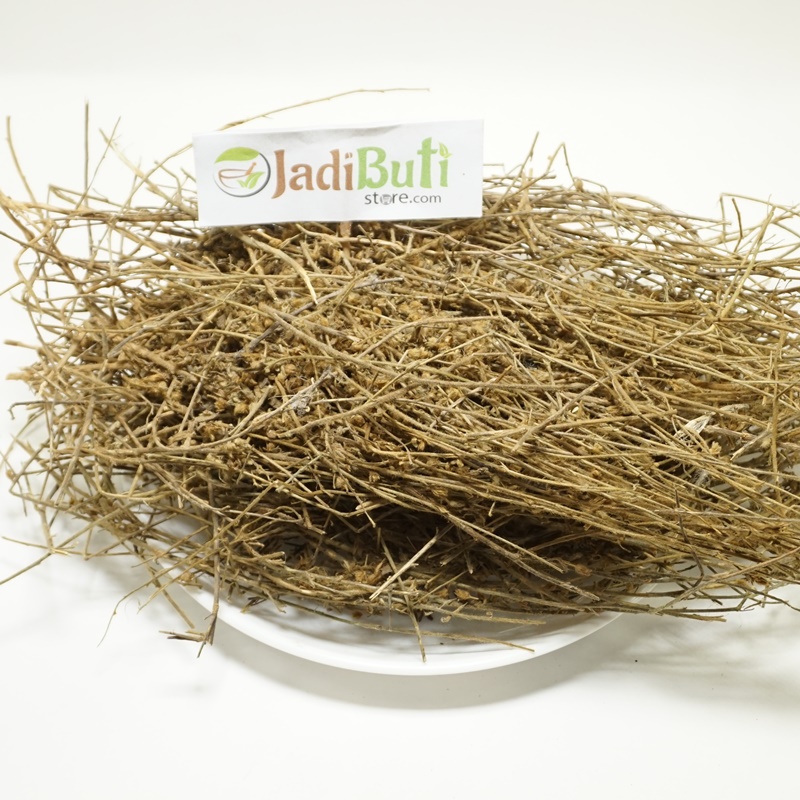
Shankhpushpi – शंखपुष्पी – Morning Glory – Convolvulus pluricaulis
₹90.00 – ₹690.00Quick ViewShankhpushpi – शंखपुष्पी – Morning Glory – Convolvulus pluricaulis
Common Name: Shankhpushpi
Scientific Name: Convolvulus pluricaulis
Plant Family: Convolvulaceae
Native Region: India
Traditional Uses: Shankhpushpi has been used in traditional Ayurvedic medicine to promote mental health, enhance memory, and improve overall cognitive function. It has also been used to alleviate anxiety, depression, stress, and improve sleep.
Active Compounds: Shankhpushpi contains several active compounds, including flavonoids, alkaloids, and glycosides, which are believed to be responsible for its medicinal properties.
Forms: Shankhpushpi is available in various forms such as powders, capsules, tablets, and liquid extracts.
Health Benefits: Shankhpushpi is believed to have several health benefits, including mental health, memory and cognitive function, sleep, anti-inflammatory properties, anti-diabetic properties, anti-convulsant properties, and wound-healing properties.
Precautions: Shankhpushpi is generally considered safe when consumed in appropriate amounts. However, it may cause side effects such as headache, dizziness, or upset stomach in some individuals. It’s important to talk to a healthcare professional before using Shankhpushpi, especially if you have any underlying health conditions or are taking medications.
-

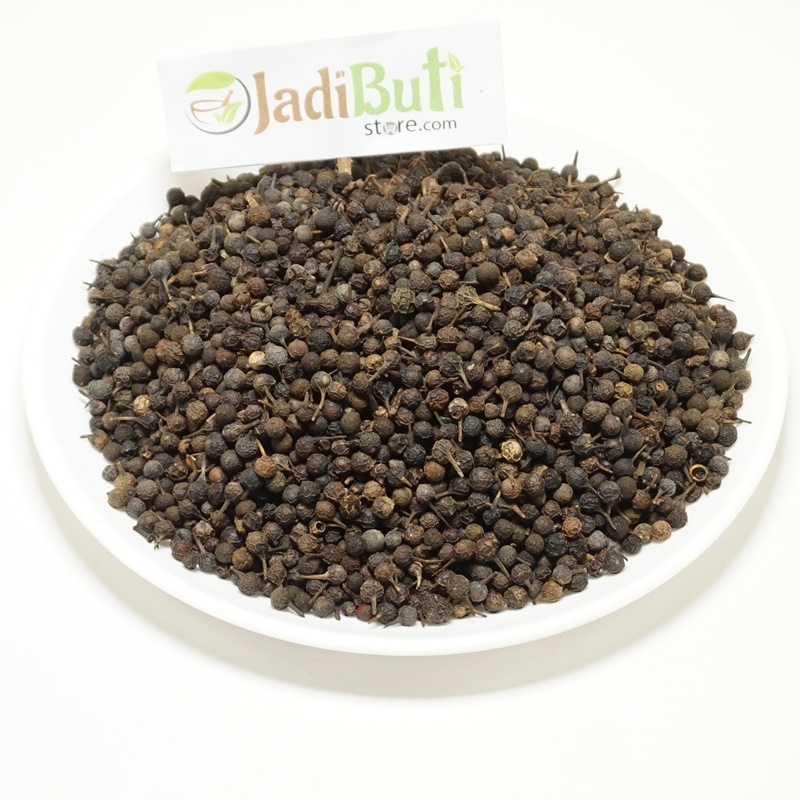
Sheetal chini – शीतल चीनी – Cubebs – Piper cubeba
₹480.00 – ₹3,975.00Quick ViewCommon Name: Cubeb Pepper, Tailed Pepper
Scientific Name: Piper cubeba
Plant Family: Piperaceae
Native Region: Java and other Indonesian islands
Traditional Uses: Piper cubeba has been used in traditional medicine to treat respiratory conditions, digestive disorders, urinary tract infections, oral health problems, and sexual dysfunction.
Active Compounds: Piper cubeba contains compounds such as cubebine, cubebol, and cubebin, which have anti-inflammatory, antimicrobial, and diuretic properties.
Forms: Piper cubeba is available in the form of dried fruit, powdered fruit, and essential oil.
Health Benefits: Piper cubeba is believed to have several health benefits, including respiratory health, digestive health, anti-inflammatory and antimicrobial properties, urinary tract health, oral health, and sexual health.
Precautions: Piper cubeba may cause gastrointestinal discomfort or allergic reactions in some individuals. It may also interact with certain medications, so it’s important to consult with a healthcare professional before use.
-

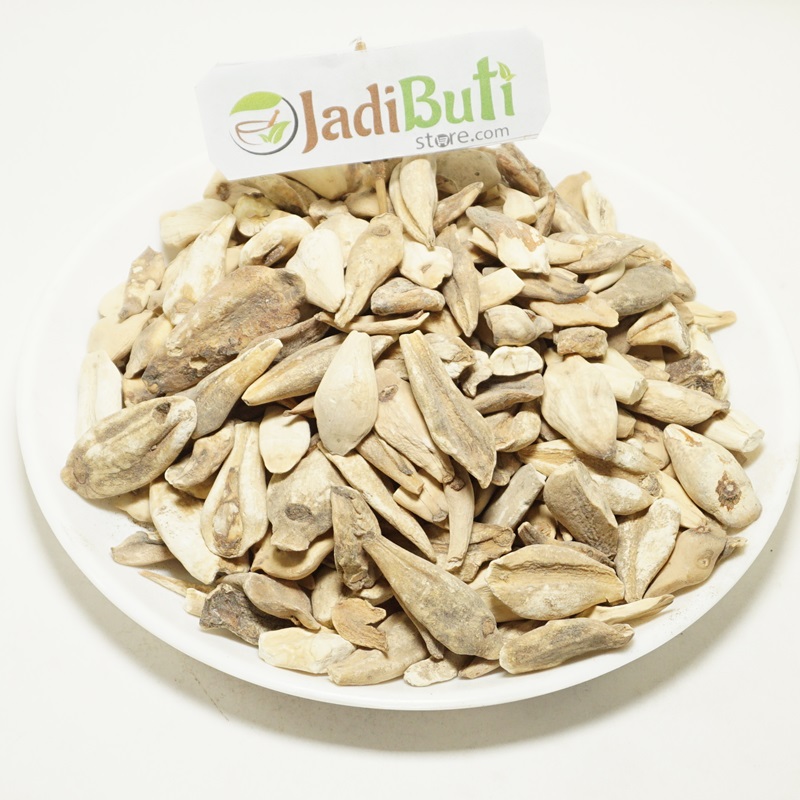
Suranjan – सुरंजन – Meadow Saffron – Colchicum luteum Baker
₹180.00 – ₹1,460.00Quick View- Suranjan (Colchicum luteum)
Description: Suranjan is a perennial herb that belongs to the Colchicum family. It is native to Europe and Asia and has been used for centuries in Ayurvedic medicine for its medicinal properties.
Key Features in Ayurveda:
- Anti-inflammatory
- Pain relief
- Digestive aid
- Immune booster
- Anti-spasmodic
- Antioxidant
Uses in Ayurveda:
- Treating inflammatory conditions such as arthritis and joint pain
- Alleviating pain associated with various health conditions
- Improving digestion and treating digestive disorders such as constipation, bloating, and indigestion
- Boosting the immune system and protecting the body against infections and illnesses
- Relaxing muscles and relieving muscle spasms, making it useful for treating conditions such as menstrual cramps and muscle pain
- Protecting the body from oxidative damage caused by free radicals
Precautions:
- Should be used under the guidance of a qualified Ayurvedic practitioner
- Can have side effects if used improperly or in large doses, such as nausea, vomiting, and diarrhea
- Suranjan (Colchicum luteum)
